How do computers store information?

A lot of information is stored on our computers. Without this information our computers wouldn't work.
Some types of information stored on our computers include:
- software applications - the programs that we use
- drivers - the instructions that allow different parts of the computer system to communicate
- files - the content that we create when we use our computer

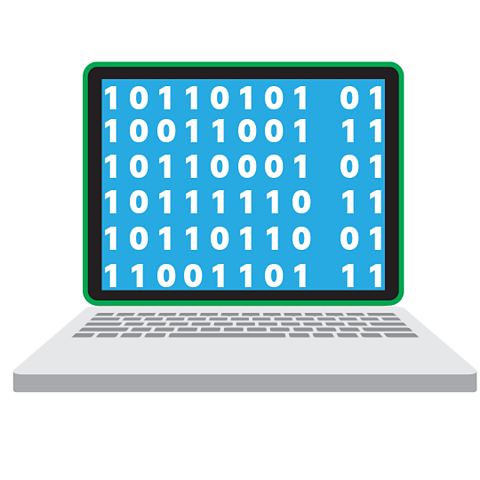
No matter what type of information is stored on our digital devices, it's all stored in the same way.
Information is converted into the numbers 1 and 0. This is called binary.
When information is converted to binary it can then be stored on our computers.
Binary is a base two system because it only uses two digits.
How are numbers represented in binary?
As binary only uses the numbers 1 and 0 we need to use a binary place value chart to work out how individual numbers are represented by binary code.
A binary place value chart has columns that double in value each time as binary is a base 2 number system.
Example:
1011 is a binary representation of the number 11.
From the place value chart below we can see that the number 11 is made up from:
- one lot of 8
- one lot of 2
- one lot of 1
We add these values together to get the value 11 (8+1+2).
| Binary place value | 8 | 4 | 2 | 1 |
| Binary code | 1 | 0 | 1 | 1 |
Storing binary data
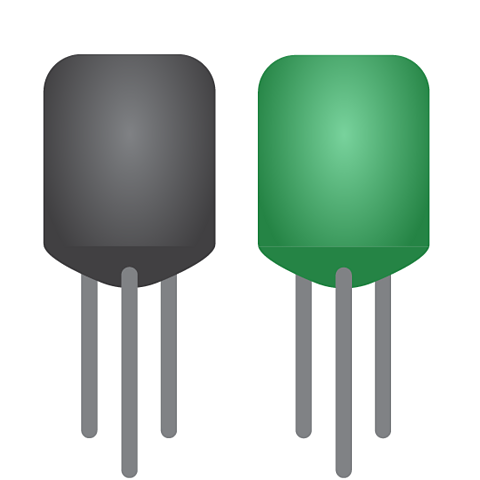
Computers store information in their memory. A computer's memory is made up of special switches. To store information in the memory, computers turn these switches on or off.
When a switch is turned on it represents the binary value of 1 and when it is turned off it represents the binary value of 0.
The data stored in one switch is known as a bit.


When information is stored on our digital device it is usually grouped into a set of eight bits known as a byte.
A byte can be used to store a single number, a letter or character.
By combining bytes together we can start to store words in the computer's memory.
These eight switches represent the binary code 01101101 which saves the letter M.
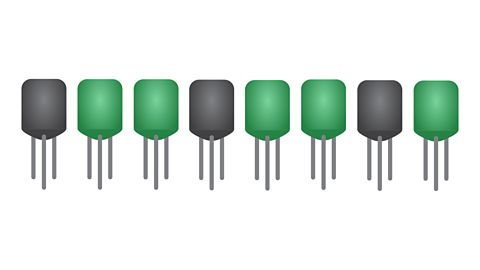
Can you work out how many bytes would be needed to store the word memory?
To store the word memory, we would need to use 6 bytes, one for each letter, or 48 bits (switches).
Storing larger amounts of information
Just like measurements that we use in maths and science, computer memory size uses units that are linked.
As the size of memory used gets larger, we move up to the next unit of measurement rather than writing longer numbers.
Watch: how are the different type of memory sizes linked
NARRATOR: How computer data is stored?
A computer can hold lots of words, music, pictures, videos and games. But how are all these things we love to read, listen to, watch and play with stored in a computer?
The computer stores them in files and these files are made up of ones and zeross, a code that the computer understands. These numbers are called bits.
BITS: Hi, we are the bits.
NARRATOR: The different ways in which these numbers or bits are put together create our files. Eight bits make a byte.
BYTES: Hi, we are the bytes. We are made of eight bits.
NARRATOR: Some files are bigger than others. 1000 bytes makes a kilobyte.
1000 kilobytes make a megabyte. 1000 megabytes make a gigabyte and 1000 gigabytes make a terabyte.
These files of different sizes are stored in our computers as ones and zeros on something called a hard drive, and you can keep all your homework, pictures, games and music in them.
Different types of memory sizes linked
| 8 bits | 1 byte |
| 1024 bytes | 1 kilobyte |
| 1024 kilobytes | 1 megabyte |
| 1024 megabytes | 1 gigabyte |
| 1024 gigabytes | 1 terrabyte |
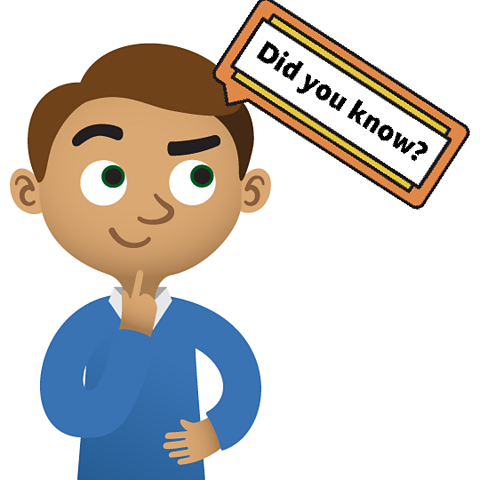
Because information is stored in binary (a base 2 number system) it uses 1024 (1000000000 in binary) not 1000 to move up to the next level.
| 1024 | 512 | 256 | 128 | 64 | 32 | 16 | 8 | 4 | 2 | 1 |
| 1 | 0 | 0 | 0 | 0 | 0 | 0 | 0 | 0 | 0 | 0 |
However, most people often say 1mb is equal to 1000kb, when really it is 1024kb!
How much memory do we need?
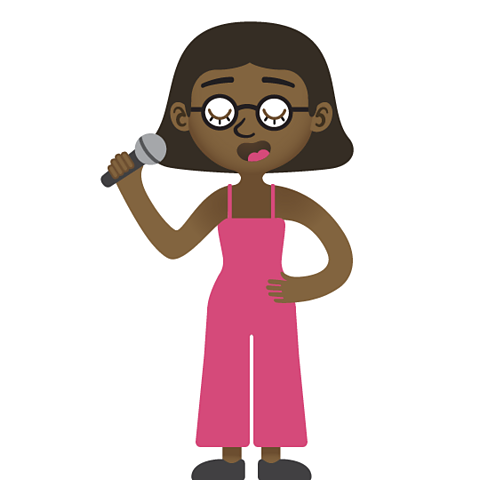
The average memory space needed to store a three minute song is equal to:
- 3 megabytes
- 3,072 kilobytes
- 3,145,728 bytes
- 25,165,824 bits
So to store one song on your digital device, over 25 million switches are used!

To store software applications, digital images and music we need computers with memory that has gigabytes of storage. This means there are billions of switches contained in the computer's memory.
Today, the switches that computers use to store information are microscopic. This means even the digital devices that fit in our pockets can store huge amounts of information on them.
Decades ago, the switches that computers used to store information were a lot larger. This is one of the reasons why computers took up so much space!
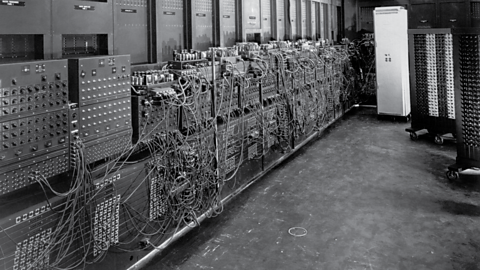
Different types of computer memory
Computers, laptops and some tablets have two types of memory, known as:
- volatileA type of memory that maintains its data and information only while the device is powered and switched on. memory
- non-volatileA type of memory that does not require power to keep its data and information. memory
Volatile memory
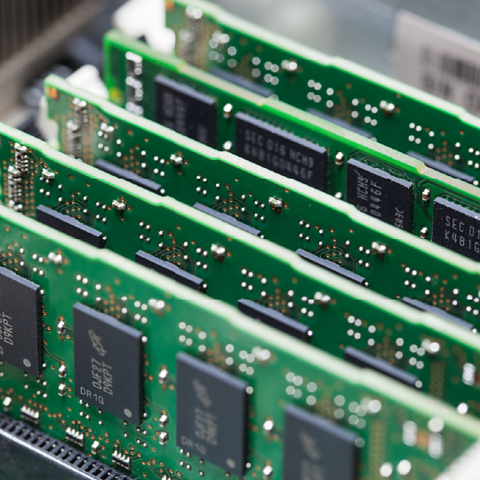
Volatile memory is the place where information is stored for a short period of time while it is being used.
The most common form of volatile memory is RAM (random access memory).
If you are writing a story, each change you make is saved on the RAM. It takes less time for the computer to locate it here.
However, when we turn our devices off, information stored in the RAM is lost.

Non-volatile memory

Non-volatile memory is where software applications, documents, images and music files are stored.
This information is not lost when our devices are turned off.
Common forms of non-volatile storage include hard driveComputer storage device that stores data on rotating magnetic surfaces. and memory stickA small device that connects to a computer and allows you to store and copy information..
It takes the computer longer to locate information that is stored on non-volatile memory.

Other places where information is stored
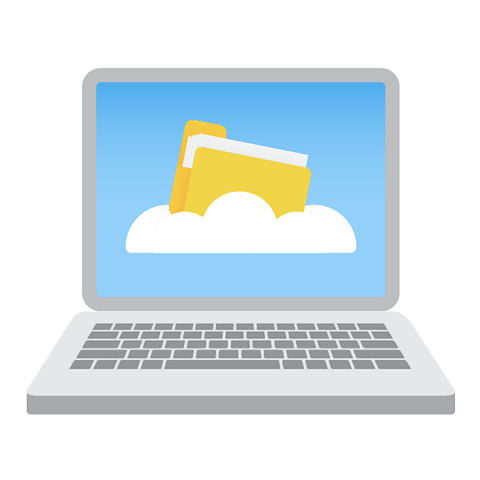
Some people choose to store information in the cloud. The cloud is not really a cloud. When information is stored in the cloud, it's stored on servers in massive data centres.
When we have stored information in the cloud, we can access it from anywhere in the world as long as we have an internet connection.
Information stored in the cloud needs to be protected by passwords to make sure only the person who owns the information can control who sees it and how it's used.

Activities
Computing - Dance Mat Typing. gameComputing - Dance Mat Typing
Build and test your computing skills with different levels of touch type challenges

More on Information technology
Find out more by working through a topic
- count17 of 17

- count1 of 17

- count2 of 17
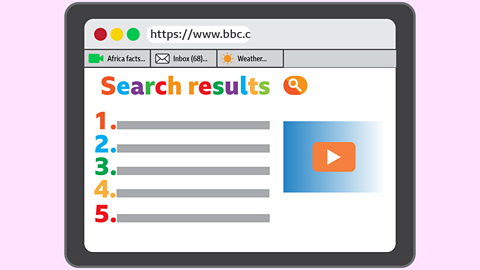
- count3 of 17
